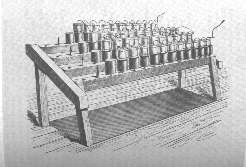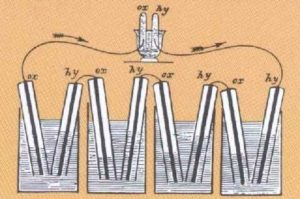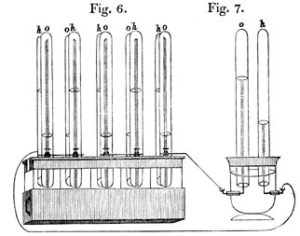May the New Year 2017 bring you good health, happiness and success.
May autonomous vehicles keep us safe.
May hydrogen be our gas in the future.
May fuel cell cars be in your dreams and driveway.
“Life is infinitely stranger than anything which the mind of man could invent.” Arthur Conan Doyle
In retrospect, perhaps the most significant historic event for transportation, for industry and possibly for humanity, conceivably the crack of dawn of a new age came to pass in Wales, a part of the United Kingdom, in 1839. That year is regarded as the birth date of the fuel cell, and Sir William Robert Grove is considered the “Father of the Fuel Cell”.
This noteworthy event, however, was unrelated to electric motors or combustion engines; more or less a mishap of science by design, a beginning shared by many other great products.
While a few learned people of that time knew of the principle of electrolysis and creation of gasses, they did not use this knowledge for any practical purpose. Some years prior, in 1802, Sir Humphrey Davy had made a simple gadget that could create a mild electric sensation when touched. He did not document his experiment to any degree and it was soon all but forgotten.
In January of 1839, the German/Swiss chemist Christian Friedrich Schönbein wrote an article in one of the scientific magazines of the time about his discovery of ozone and about the reaction of hydrogen and oxygen. However, it was non-other than William Grove to document just one month later, in February of 1839, his observations in the “Philosophical Magazine”. He had conducted a series of experiments with his second invention, which he termed a “gas voltaic battery”. He explained the possibility of the creation of electricity by the reaction of hydrogen and oxygen. Grove later presented his invention in all its details. He had established that, when running an electric current through water, it would split water into hydrogen and oxygen. He reckoned that, if it worked one way, it should also succeed in reverse. To prove his theory, Grove built the world’s first fuel cell.
 Grove gas voltaic battery – the first fuel cell
Grove gas voltaic battery – the first fuel cell
William Robert Grove (1811 – 1896) had studied law. He also studied chemistry (natural science at the time) and was a professor of physics at the London Institute from 1840 to 1847. He demonstrated his first invention, a platinum-zinc battery by using it to light up one of his lectures. His scientific and legal background led him to work as a patent attorney and as a judge. Grove was knighted in 1872.
Grove’s experiments had proved that electric current could be produced with hydrogen and oxygen. His questions about the by-products of that process -heat and water- could not be answered with the equipment of that time, and with the chemical theories known almost two centuries ago. Subsequent researchers would have to solve those puzzles.
Much less did anybody know at that time what to do with an invention such as this, a Fuel Cell. No practical or commercial application was to be found for more than a century. Totally useless in its time. But what a blessing it is, to be able to fall back onto such an invention at this critical time for the future of nations and nature.

Another explanation of Grove’s fuel cell
These schematics can also be found elsewhere on this site.
You have to wonder what the multi-talented mastermind of William Robert Grove could have accomplished in the right time at the right place; what a creative genius like Leonardo da Vinci could have designed, had he worked at General Motors or Grove at General Electric. The great imaginative thinker Albert Einstein was born at the right time, lucky he, being understood and appreciated.
In subsequent articles, we will get to know a few more of the persons, places, and events that played a major role in bringing the fuel cell to the point where practical applications could begin. We will also explore the first usage of what hopefully soon will be as commonplace as … (your choice of word)
Work with me here, — imagine, dream, invent, create, construct, bring thought and skill together. Endlessly.
Next: Polluting & Promising Times
Comments are closed here.

